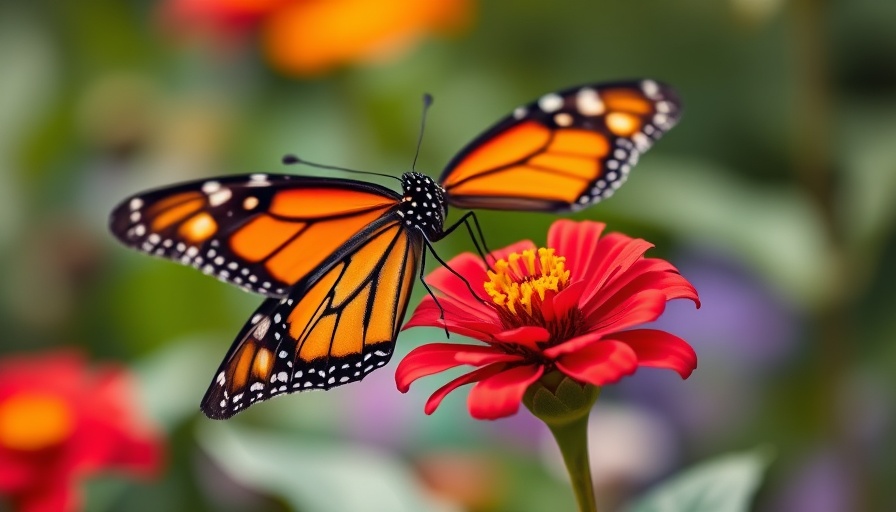
Unraveling the Mystery: The Monarch Butterfly Crisis
The majestic Western monarch butterfly, a symbol of beauty and resilience, is experiencing a troubling crisis. A recent study has linked a mass die-off to the indiscriminate use of pesticides, raising alarms among wildlife enthusiasts and environmental advocates. In January 2024, researchers discovered hundreds of dead or distressed monarchs near the Pacific Grove Monarch Sanctuary in California. Their findings, now published in the journal Environmental Toxicology and Chemistry, reveal a repeat pattern—pesticides have become a grave threat to these once-abundant creatures.
The Findings: Evidence of Poisoning
Through sophisticated testing methods like liquid and gas chromatography, scientists detected a collection of 15 various insecticides, herbicides, and fungicides on the butterflies. Staci Cibotti, the study’s lead author from the Xerces Society for Invertebrate Conservation, noted that each butterfly contained an average of seven different pesticides. Alarmingly, these included potent neurotoxins known for their lethal effects on insects. Among them were human-made pyrethroids, with levels suggesting they were present at their lethal doses. Bifenthrin, cypermethrin, and permethrin were staples in nearly all samples, underlining the dangers lurking in local habitats.
Understanding the Impact: A Long-Term Decline
The plight of the Western monarch butterfly isn’t a new phenomenon. According to the Xerces Society, populations have plummeted by nearly 95% since the 1980s. As they now face a startling forecast from conservationists, with a staggering 99% chance of extinction by 2080 according to the U.S. Fish and Wildlife Service, immediate action is vital. The study serves not just as a confirmation of suspicions but as a rallying call to protect these delicate pollinators, alive only in dwindling numbers.
Protecting Monarchs: Steps Toward a Safer Future
In response to the alarming findings, the Xerces Society has proposed a range of actions aimed at safeguarding monarch butterflies from pesticide exposure. These include increasing public awareness regarding pesticide risks, creating pesticide-free zones around critical overwintering locations, and enhancing protections within conservation plans. Additionally, calls for improved coordination among officials regarding pesticide usage are crucial to mitigate risks posed to monarchs and other sensitive species.
The Way Forward: Community Engagement and Action
As members of communities committed to conservation, we must play an active role in protecting these remarkable insects. It begins with education—understanding the implications of pesticide use and advocating for responsible farming practices in our local area can make a significant difference. Local initiatives to create butterfly gardens using native plants and avoiding harmful chemicals can enrich our ecosystem while providing safe havens for monarchs. Encouraging local schools and community groups to become involved in butterfly monitoring programs can also foster a deeper connection to our natural world.
In conclusion, the story of the Western monarch is not merely one of decline but a call to action. With your commitment to awareness and conservation, we have the power to change their fate and witness the return of these beautiful butterflies to our skies. Together, we can ensure that the future of the Western monarch butterfly is one of recovery and resilience.
 Add Row
Add Row  Add
Add 




Write A Comment